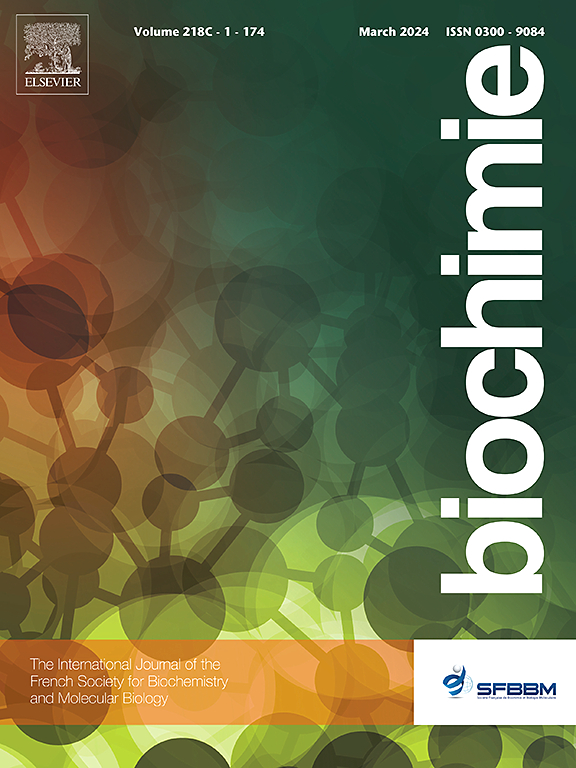Metabolic adaptation mechanisms of glycogen reduction and lipid accumulation in testicular protection in Daurian ground squirrels during hibernation
IF 3
3区 生物学
Q2 BIOCHEMISTRY & MOLECULAR BIOLOGY
引用次数: 0
Abstract
The role of glycogen and lipid metabolism in the testes of Daurian ground squirrels (Spermophilus dauricus) during different stages of the hibernation cycle and their influence on reproductive function remain poorly understood. This study examined testicular morphology across hibernation stages and investigated potential molecular mechanisms. Results showed that: (1) Spermatocyte density was reduced in the torpor group compared to the pre-hibernation (PRE) group, suggesting a suppression of spermatogenesis during torpor. In the post-hibernation (POST) group, reduced spermatocyte density was speculated to correspond to the initial phase of spermatocyte maturation into spermatozoa. (2) Glycogen content was lower during interbout arousal (IBA), while glycogen phosphorylase (GP) activity was significantly elevated compared to the other stages. Sertoli cell density was higher in the IBA group relative to the torpor group, suggesting that elevated GP activity facilitates glycogen breakdown, providing glycolytic substrates for Sertoli cells during this phase. (3) During torpor, triglyceride and fatty acid levels, along with fatty acid synthase and acetyl-CoA carboxylase activities, remained consistent with PRE levels. These findings suggest that fatty acids are crucial for maintaining testicular reproductive function during torpor. In contrast, lipid metabolism indicators declined during the near post-hibernation (NP) and POST stages, likely supporting the rapid reactivation of reproductive processes required for the upcoming breeding season. In summary, this study highlights a dynamic interplay between lipid and glycogen metabolism across hibernation stages, with the transition from lipid-based metabolism during torpor to glycogen utilization during IBA playing a pivotal role in sustaining testicular homeostasis in Daurian ground squirrels.

达斡尔地松鼠冬眠期间睾丸保护中糖原减少和脂质积累的代谢适应机制。
达斡尔地松鼠(spermoophilus dauricus)睾丸中糖原和脂质代谢在冬眠周期不同阶段的作用及其对生殖功能的影响尚不清楚。本研究考察了冬眠阶段睾丸形态,并探讨了潜在的分子机制。结果表明:(1)与冬眠前(PRE)组相比,冬眠组的精子细胞密度降低,表明冬眠期间精子发生受到抑制。在冬眠后(POST)组,精子细胞密度的降低被推测与精子细胞成熟为精子的初始阶段相对应。(2)与其他阶段相比,间歇觉醒时期糖原含量较低,而糖原磷酸化酶活性显著升高。与冬眠组相比,IBA组的支持细胞密度更高,这表明GP活性的升高促进了糖原的分解,在这一阶段为支持细胞提供了糖酵解底物。(3)在冬眠期间,甘油三酯和脂肪酸水平以及脂肪酸合成酶和乙酰辅酶a羧化酶活性与PRE水平保持一致。这些发现表明脂肪酸在冬眠期间对维持睾丸生殖功能至关重要。相比之下,脂质代谢指标在近冬眠后(NP)和POST阶段下降,可能支持即将到来的繁殖季节所需的繁殖过程的快速重新激活。总之,本研究强调了冬眠阶段脂质和糖原代谢之间的动态相互作用,冬眠期间脂质代谢向IBA期间糖原利用的转变在维持达斡尔地松鼠睾丸稳态中起着关键作用。
本文章由计算机程序翻译,如有差异,请以英文原文为准。
求助全文
约1分钟内获得全文
求助全文
来源期刊

Biochimie
生物-生化与分子生物学
CiteScore
7.20
自引率
2.60%
发文量
219
审稿时长
40 days
期刊介绍:
Biochimie publishes original research articles, short communications, review articles, graphical reviews, mini-reviews, and hypotheses in the broad areas of biology, including biochemistry, enzymology, molecular and cell biology, metabolic regulation, genetics, immunology, microbiology, structural biology, genomics, proteomics, and molecular mechanisms of disease. Biochimie publishes exclusively in English.
Articles are subject to peer review, and must satisfy the requirements of originality, high scientific integrity and general interest to a broad range of readers. Submissions that are judged to be of sound scientific and technical quality but do not fully satisfy the requirements for publication in Biochimie may benefit from a transfer service to a more suitable journal within the same subject area.
文献相关原料
公司名称
产品信息
索莱宝
PAS
 求助内容:
求助内容: 应助结果提醒方式:
应助结果提醒方式:


